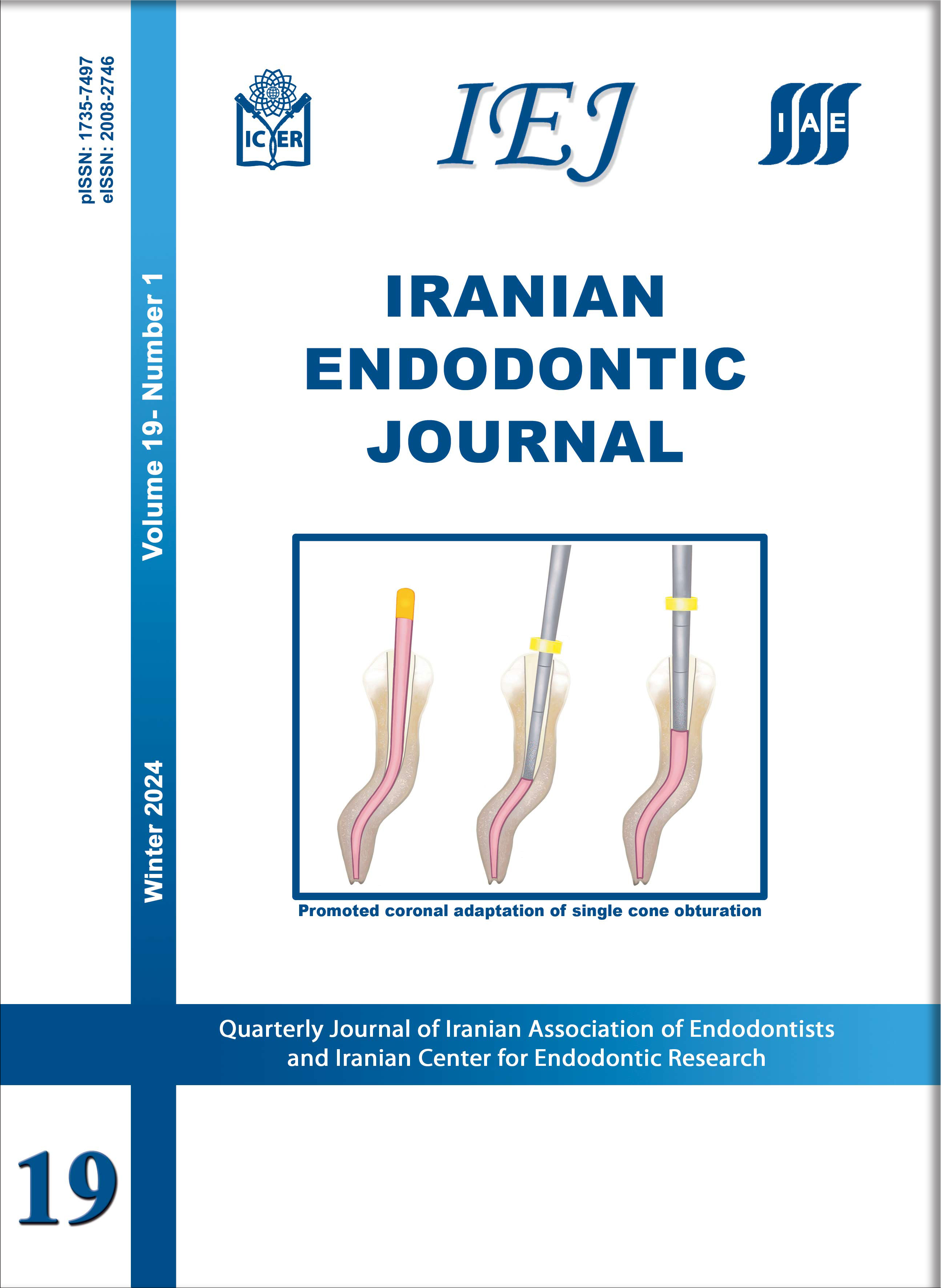Efficacy of Enamel Matrix Derivative in Vital Pulp Therapy: A Review of Literature
Iranian Endodontic Journal,
Vol. 12 No. 3 (2017),
2 July 2017,
Page 269-275
https://doi.org/10.22037/iej.v12i3.12036
Introduction: Vital pulp therapy (VPT) aims to preserve the health and maintain life of the tooth pulp which has been compromised by caries, trauma or restorative procedures. Recently, enamel matrix derivative (EMD) has been introduced as a material for vital pulp therapy. The aim of this review is to critically analyze and summarize the available literature on EMD for VPT. Methods and Materials: Online databases (PubMED/MEDLINE, Google Scholar, ISI Web of Science, and Wiley-Online) were searched by using the following keywords in various combinations: Enamel Matrix Derivative, Emdogain, ‘Vital Pulp Therapy, ‘Apexogenisis’, Apexification, Pulp Capping, Endodontics, Dentine and Pulpotomy for studies indexed from January 1949 to April 2016. We used an English-limited search in Google.co.uk for the missing grey literature. All studies fulfilling the selection criteria were carefully reviewed for the focused question: “Does using EMD in VPT, compared with other materials, result in better clinical, radiographic and histological outcomes?”. Results: The primary search resulted in 18 articles of which, 14 articles (including 6 animal studies and 6 clinical trials and 2 case reports) met the inclusion criteria for this review and hence were included. The number of teeth tested in the animal studies ranged from 8 to 144 including pigs, rats and dogs teeth. A number of studies used EMD in the experimental group in comparison with calcium hydroxide, propylene glycol alginate (PGA) and MTA as a control. The observation period ranged from 1 to 2 months and 4 out of 6 animal trials reported more favorable outcomes with EMD while two studies reported comparable outcomes. Conclusion: Although EMD has potential for various applications in endodontics, studies conducted to date have failed to demonstrate any significant advantage of EMD over conventional VPT materials. Additionally, the 5-year and 10-year survival rate of EMD-treated teeth is not yet known. Hence, studies with a longer follow-up periods are required to deduce the long-term viability of teeth treated with EMD.
Keywords: Enamel Matrix Derivative; Pulp Capping; Pulpotomy; Root Canal; Vital Pulp Therapy




